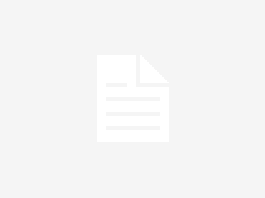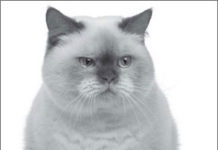An Unmistakable Sign of Anal Problems: Scooting
Scent is one of the ways cats communicate, and their anal glands help in that effort. The pea-sized glands, or sacs, produce an odor that aids in establishing identity and territory. When a cat defecates, the scent glands empty through two ducts located at the 4 o’clock and 8 o’clock positions of the anal sphincter, the band of muscle encircling the anus.
Why Do They Cover/Uncover the Litter Box?
This occasional series explores the reasons for cats’ often intriguing behavior. If you would like to suggest a topic, please write CatWatch Editor, 800 Connecticut Ave., Norwalk, CT 06854, or email catwatcheditor@cornell.edu. One of the enduring mysteries of cats’ behavior is why they cover their feces after eliminating. One theory is that they’re trying to hide their presence from predators, as cats in the wild are believed to do, but no studies support that idea. Another suggests that the behavior is an indication of cats’ fastidiousness, but that doesn’t explain fastidious cats who leave urine or feces uncovered. The real answers are far more complicated.
Ask Elizabeth: October 2012
Toxoplasmosis is caused by the protozoal parasite Toxoplasma gondii, which requires passage through a cat to produce infective oocysts that can subsequently infect other warm-blooded animals. Cats usually acquire toxoplasmosis by eating infected prey, and approximately 20 percent of cats will begin to shed toxoplasma oocysts in their feces after ingesting toxoplasma. Oocysts in cat feces take between 24 and 48 hours to become infective for other animals, so if you are able to remove the feces from your garden within 24 hours (wearing gloves and washing hands thoroughly afterward), you will significantly decrease the likelihood of having your vegetables be a source of toxoplasma infection.
Free Cat Litter for a Worthy Cause
World’s Best Cat Litter™ recently announced that Blind Cat Rescue & Sanctuary of St. Pauls, NC was randomly selected from a fan submission to win the first round of GiveLitter™ for the year. The shelter will receive 2012 pounds of litter that will help its hardworking staff clean up after blind cats currently looking for homes.
Short Takes: March 2012
Boxiecat is a new online subscription cat litter service that can help save trips to the grocery store, and puts an end to lugging heavy bags of litter. Considering that there are 86.4 million pet cats living in the United States, this service can certainly fill the necessity for litter in a new and more convenient way — especially for the elderly or the handicapped pet owner.
Tackle (and Prevent!) Litter Box Odor
An estimated 65 million cats live in more than 30 million American households, certainly a staggering number. Equally staggering can be the offensive odors that their urine and feces can produce. Cat owners spend millions of dollars a year on products designed to reduce or eliminate these odors. The chief odor producer is the urine. Unless the perpetrator is suffering from a serious temperamental or physical disorder, the smell will be caused by perfectly normal cats relieving themselves — or expressing themselves sexually or territorially — beyond the confines of their litter boxes or in boxes that are improperly maintained.
Is It Urine Marking or Incontinence?
When a cat begins soiling the house, it is usually assumed that it is a behavioral problem or the onset of senility. However, there are several medical conditions that can cause urinary incontinence and inappropriate urination, some of which require immediate treatment. First, it is important to distinguish between incontinence and inappropriate urination. True incontinence occurs when a cat does not have voluntary control over urination; trauma, a weak primary sphincter muscle and congenital abnormalities are the most common causes of incontinence.
Tackling Cat Hair and Pet Odor
The best strategy to minimize a pet hair problem in your home is to remove loose hair from your cats coat before it hits the floor. And ironically, shorthaired cats often shed more than longhaired cats. Of course, you cant possibly catch all pet hair before it falls out. So when it does make its inevitable landfall, the following are ways to pick up pet hair as easily and thoroughly as possible. Tackling Upholstery.Vacuuming is the first approach to removing cat hair from upholstery; however, if your vacuum isnt removing enough hair, you can try one of several other approaches.
All About the Alternative Cat Litters
Over the past decade, a number of products have entered the cat litter market as "alternative" litters. The chief claim of many of these litters is that they are made from plant-based or recycled materials, as opposed to clay, the basis of "traditional" kitty litters. As with most products or groups of products, there are both advantages and disadvantages to using alternative cat litters. One advantage that makers of these specialty litters feel appeals to cat owners with environmental concerns is that alternative litters - because they are made of biodegradable substances - present less strain on landfills. Some brands are even marketed as being "compostable" and/or burnable.
Toxoplasmosis: The Facts
Toxoplasmosis is a fairly common zoonosis (a disease that can be shared between humans and animals); 30 to 40 percent of adult humans, and roughly the same percentage of cats, have antibodies that indicate prior exposure to the organism that causes the disease. Nevertheless, theres still a lot of misinformation regarding toxoplasmosis. The disease poses a threat primarily to fetuses and to immunosuppressed patients, but an understanding of the organisms life cycle, how transmission occurs and can be avoided, and the signs of infection can greatly reduce the risk of serious disease.
Keep Your Home Sweet Home
For all the companionship and love your cat brings into your home, theres also one dirty downside to living with him: the scooping and changing of his litter box (lugging home the heavy stuff isnt much of a treat, either). Luckily, there are ways of making this unpleasant job a little easier. If you use the right materials, create a litter-changing routine and keep the necessary supplies in a convenient place, this chore can definitely be made less labor-intensive. We share some tips to reduce litter drudgery.
Choosing an Alternative Litter
Over the past decade, numerous products have entered the cat litter market as "alternative" litters. The chief claim of many of these litters is that they are made from plant-based or recycled materials, as opposed to clay, the basis of "traditional" kitty litters. Potential Benefits. As with most products or groups of products, there are both advantages and disadvantages to using alternative cat litters. One advantage that makers of these specialty litters feel appeals to cat owners with environmental concerns is that alternative litters - because they are made of biodegradable substances - present less strain on landfills. Some brands are even marketed as being "compostable" and/or burnable. Additionally, alternative litters are made of materials that often give off little to no dust - which can be a benefit to a cat with upper respiratory issues. "Our general advice to owners of asthmatic cats is to limit environmental exposure to potential irritants of all kinds," says Carolyn McDaniel, VMD, a consultant with the Cornell Feline Health Center. "This includes aerosol cleaning agents, perfumes, cigarette smoke … and dusty cat litter."















